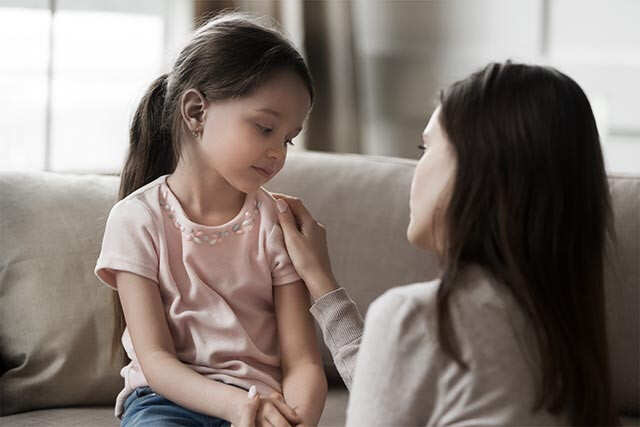Children are always exploring, learning about their environment, and assessing their responses based on their learnings. One of the learnings is about the moral code of conduct which they try to understand by pushing the boundaries of what is acceptable, and what’s not. Since parents are children’s main guides in their initial years, it becomes important for a parent to step in and help children understand the acceptable norm as best as they can.
The famous psychologist Dr Jordan Peterson wrote in his book, 12 Rules For Life, “Parents are the arbiters of society. They teach children how to behave so that other people will be able to interact meaningfully and productively with them.” Read on to get a start on how to go about teaching your children about personal boundaries.
Understanding Personal Space

First, you need to explain to your children the concept of personal space. Simply put, it is the space between you and the person who is next to you that is comfortable for you. In school, children are often taught to keep an arm’s distance between them and those next to them. As parents, you can extend the idea when a teaching moment presents itself. Alternatively, you can use creative means. “Children don’t understand what boundaries mean. You have to show them physically what an actual boundary is by using a hula hoop. Then, ask them to imagine themselves at the centre of a small hula hoop. That’s the kind of distance they need to maintain.
They also should understand that they have to be within their hoop when they talk to anyone. If they go to the edge of the hoop to talk, they are encroaching upon another person’s personal boundary,” advises Dr Parul Tank, a psychiatrist at Nimai Health Care and consultant with Asian Heart Institute and Fortis Hospital, Mumbai.
It does not end at that. Children also need to actively learn to ask people to respect their personal boundaries. For them to feel courageous enough, they need to have space where they can feel comfortable enough to open up to the parent. All it takes is an open dialogue between the parents and child.
“I constantly tell my daughter that if there is somebody who is coming close to her, and making her uncomfortable, she should raise her voice, and talk about it. But in order for her to feel confident in doing so, I ensure that she feels that she can come and talk to me. Whether it is a happy occasion or a not so happy occasion, she should disclose stuff and have an open conversation with me so that we both can process her personal space and comfort zone,” says Ritu Gorai, COO of the Journey About Mast Moms network.
Learning About Good Touch


One of the important facets of learning about personal boundaries for your child is learning about good touch and bad touch. We all have heard about it as it has been made popular by movies and television series. But the question remains when do you start teaching children about it? Dr Natasha Kate, a psychiatrist at Nanavati Hospital, Mumbai says, “Children as young as one to two years of age can be taught which areas of their body are allowed for other people to touch without the explicit permission of the family or the parents and which areas are no-touch areas.”
For the younger children, you can use a toy to communicate the idea and ensure that the children are able to apply it. Furthermore, if your children talk about being uncomfortable with your touch, it is important to respect their opinion. Dr Kate elaborates, “Refrain from a particular action if your child is not comfortable. Do not tell the child to get over it, or it is something essential as they may apply it to other situations that might be riskier and open to exploitation.”
























No comments:
Post a Comment